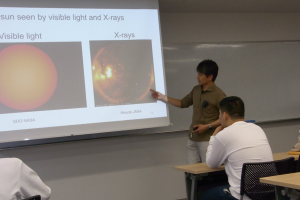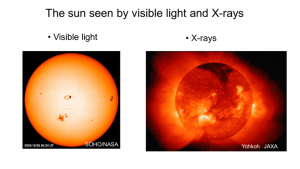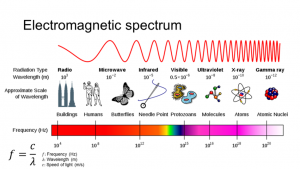(理工学部、建築・環境学部教養学会主催ミニ講演会)
第64回理科系学生のための公開英語講演会
Exploring the Dynamic High-Energy Universe
激動の高エネルギー宇宙への旅
講師:理工学部、数理・物理コース 中嶋 大 先生
On May 16th, 2024, the 64th session of t
he English Lecture Meeting for Science Major Students was held under the sponsorship of t
he Academic Society of Faculty of Liberal Arts, inviting Doctor Hiroshi Nakajima at the College of Science and Technology to give a lecture with the above title, which was the 5th opportunity on which the lecturer gave a talk to the audience consisting mainly of science major students.
Before the lecture, Dr. Nakajima clarified to the audience the aim of this event as follows: “One objective of this talk series as I understand is for you to familiarize yourselves with various scientific topics raised by each lecturer who is engaged in his or her research in their own scientific fields or for you to get used to English expressions used especially in presentation on scientific issues. I think, however, there are another important objective for this series of talks; that is, for you to find topics or issues, scientific or whatever, in which you get interested. If you encounter a topic or issue which you find interesting, it will certainly mark one of the most precious moments during your college life. For this reason, I wish I could arouse and develop your interest through this lecture in the topics that I am going to talk about today, which in my case is specifically related to celestial objects and astronomy.”
Dr. Nakajima started his lecture by explaining what X-rays are and what their nature is: “Next, look at these two pictures of the sun. When seen in visible light, the image of the sun is rather flat, as this picture shows; there is nothing but a few black spots. On the other hand, when we watch the sun with X-rays, we can see a lot of explosive phenomena all over its surface. Many of these structures come from acceleration of charged particles along magnetic fields on the surface of the sun, as well as high temperature plasma around its surface.”
By way of clarifying the nature of X-rays, Dr. Nakajima went on to show what we can learn from the diagram of electromagnetic spectrum: “We call electromagnetic waves with many different names, but all of these waves are the same except for difference in wavelength: if the wavelength is long, we call the wave a radio wave or a microwave; if the wavelength is very short, we call it X-rays or Gamma-rays. Do you know the typical wavelength of visible light? It is slightly shorter than one micron. X-ray has much shorter wavelength, 10 to the minus 10th power meter, which is almost the size of an atom. We also notice from this diagram that the shorter the wavelength, the higher its frequency is. Specifically, the frequency of visible light is somewhere around 10 to the 14th power Hz; on the other hand, the frequency of X-ray is higher than 10 to the 18th Hz. In this lecture, I hope to show you how important the fact is that X-ray has high frequency when we observe celestial bodies with it.”
Following the introduction above, as main topics of this lecture, Dr. Nakajima gave a detailed account of the latest results of observational research on high-energy phenomena that occur in the universe, as well as several general topics on black holes such as what the black hole is or how it is created.
Finally, after having talked about the recent project, in which he has been engaged as a member, i.e., the development of state-of-the-art observational instruments based on the latest result of inquiry and the XRISM (X-ray Imaging and Spectroscopy Mission), Dr. Nakajima concluded the lecture with the following remarks: “You can contribute to all the missions to come, so I do hope to welcome you to visit my laboratory to realize these missions. Let’s develop new cosmic vision with state-of-the-art observatories and their data. With XRISM mission, if we observe supernova remnants, we can measure odd elements produced in explosion. It will be the first achievement; nobody has ever succeeded in this observation. If we observe clusters of galaxies, we can observe dark baryon, which is different from dark matter but is another key component of the universe.”
In the second portion of this program the Q and A session, a lot of questions were asked by the audience, to all of which Dr. Nakajima gave answers in detail. The following is one of those Qs and As:
Q. My question is about giant flares of magnetars (neutron stars). Why are giant flares from magnetars (neutron stars) so rare?
私の質問は巨大なフレアについてです。中性子性の巨大フレアはなぜ珍しいのですか?
A. Your question must have come from a recent Nature paper (https://doi.org/10.1038/s41586-024-07285-4). Let me answer your question assuming you read it. The magnetar itself is a subclass of neutron stars and has an extremely high magnetic field of 〖10〗^(15-16) G or 〖10〗^(11-12) T. If a reconfiguration and a reconnection of the magnetic field lines happen, a large amount of energy will be released.


